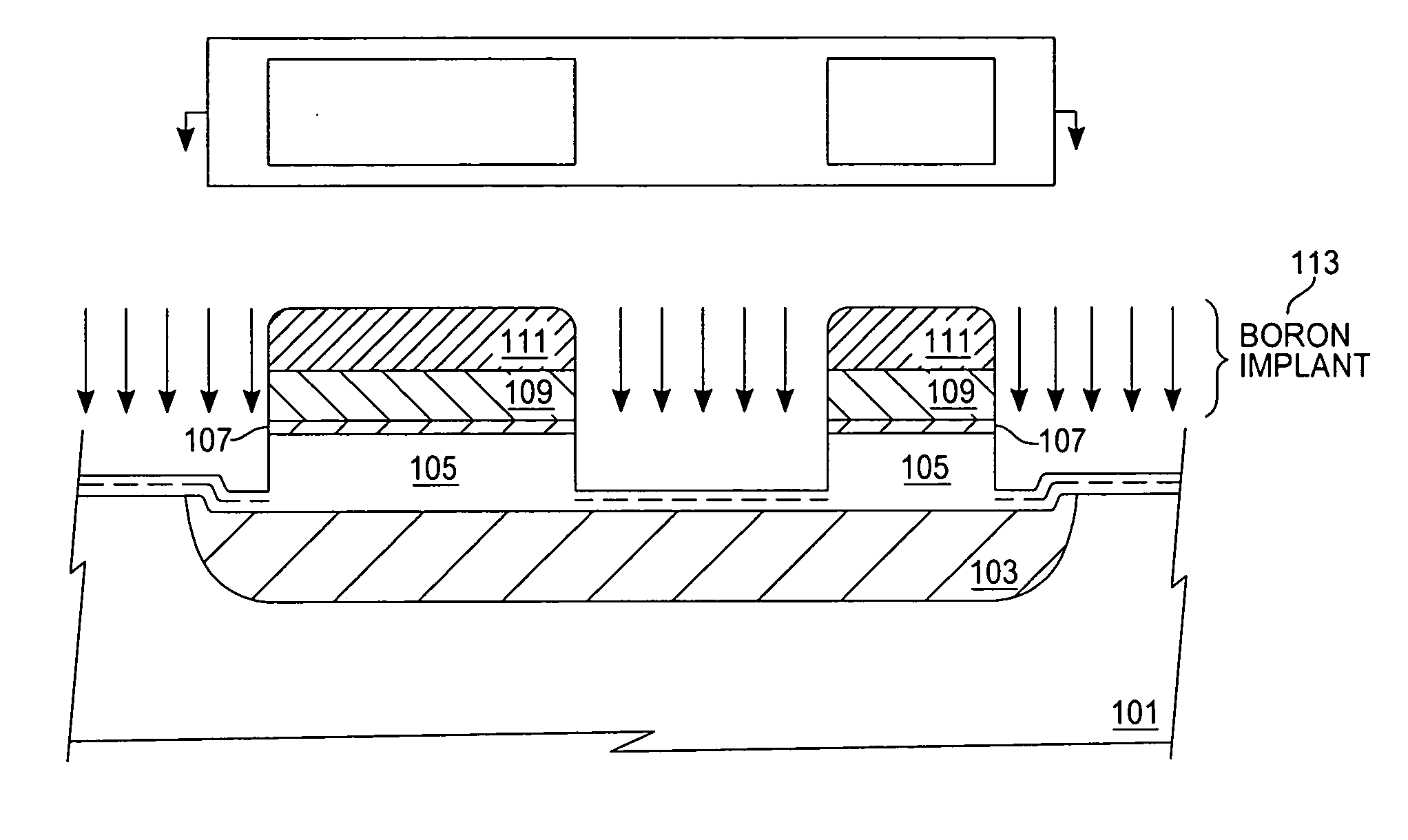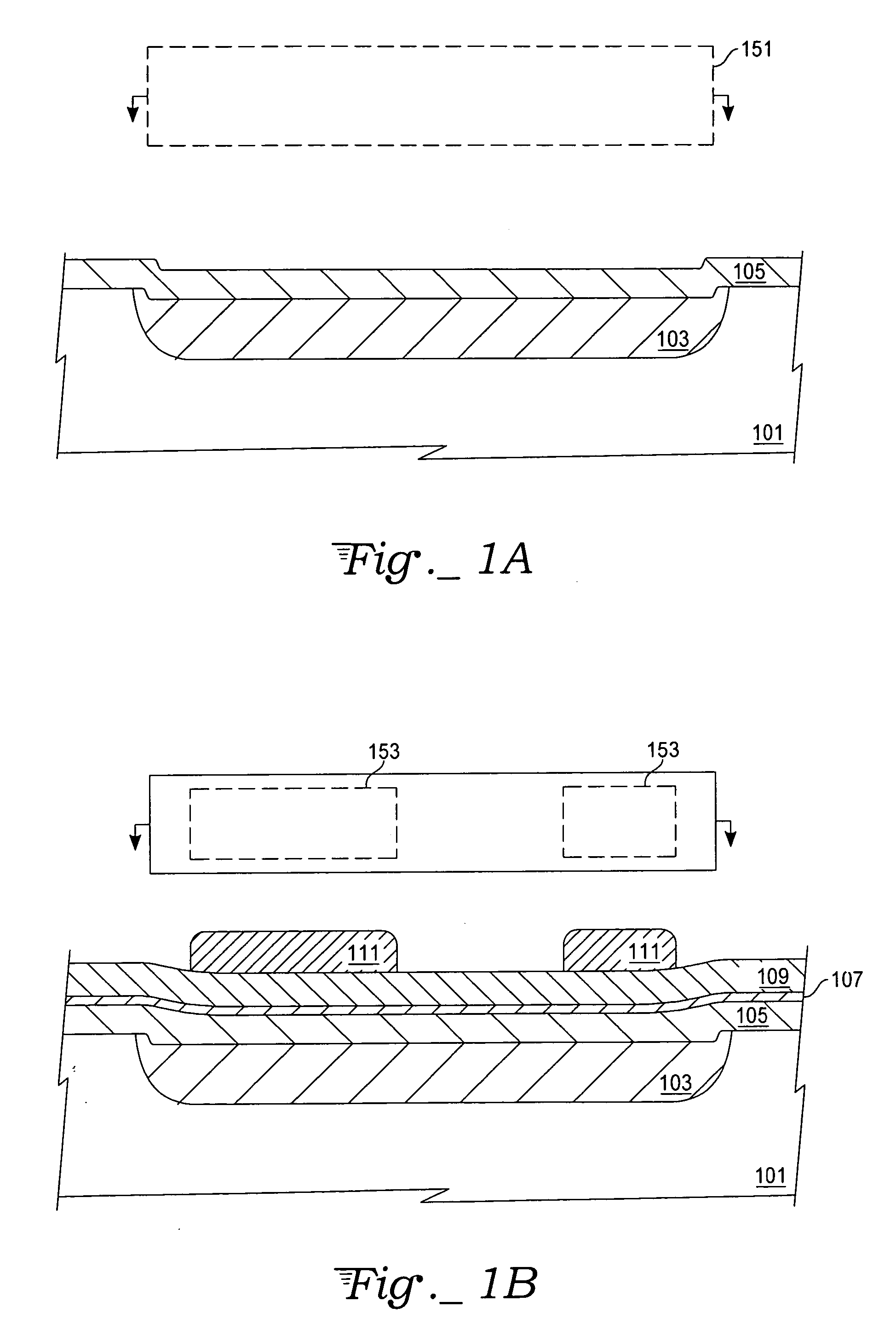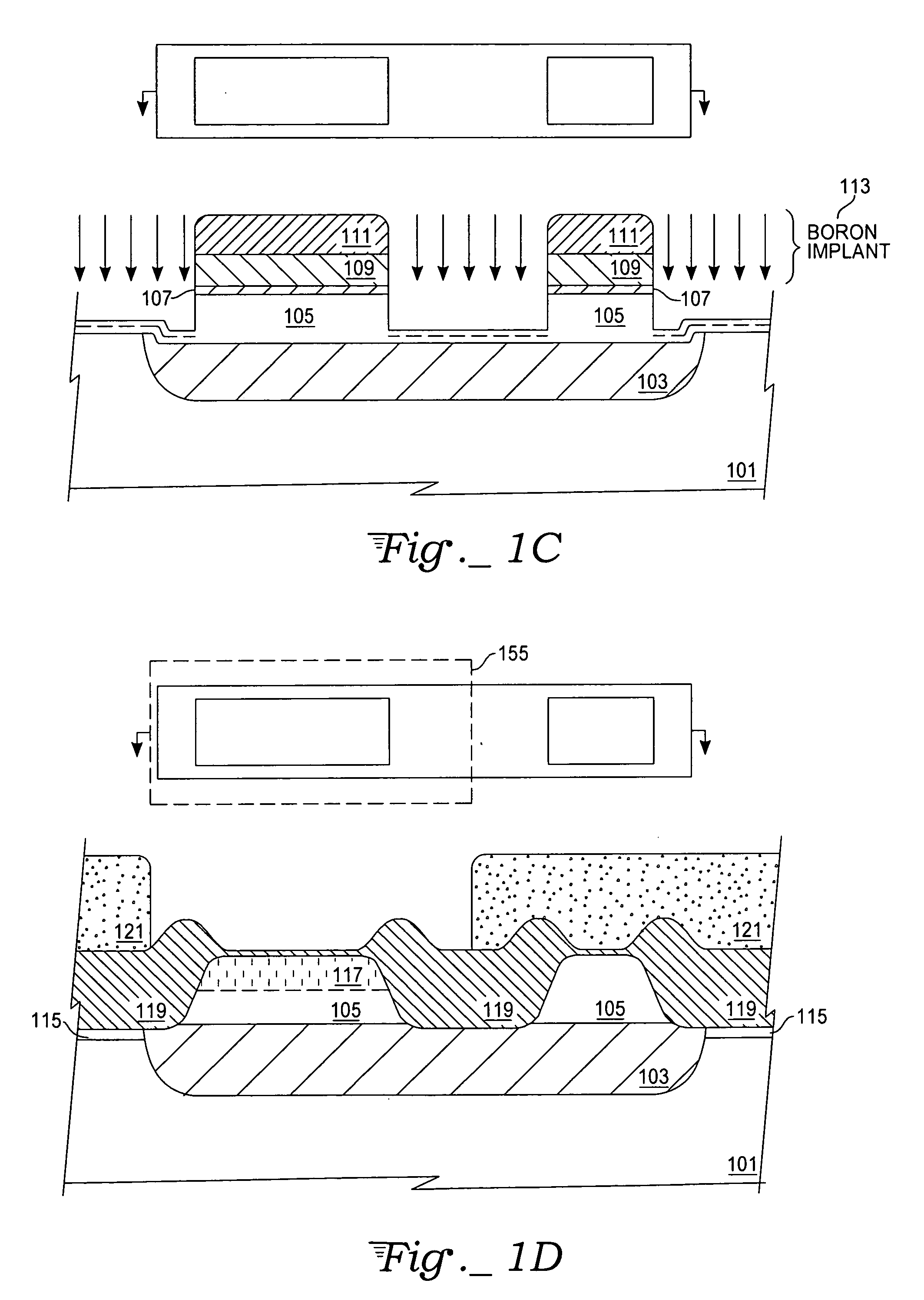Method for growth and optimization of heterojunction bipolar transistor film stacks by remote injection
a technology of heterojunction bipolar transistor and film stack, which is applied in the direction of basic electric elements, electrical apparatus, semiconductor devices, etc., can solve the problems of reducing the maximum operating, reducing process control, and direct injection necessitating an increase in process complexity, so as to prevent the outdiffusion of boron and eliminate or minimize the deleterious effects
- Summary
- Abstract
- Description
- Claims
- Application Information
AI Technical Summary
Benefits of technology
Problems solved by technology
Method used
Image
Examples
Embodiment Construction
[0018] With reference to FIGS. 1A-1F, overall exemplary process steps of a typical HBT device are detailed to illustrate remote injection techniques of the present invention. For simplicity, a single bipolar device region is shown in the drawings. Other electronic device regions (e.g., CMOS transistors) as well as digital logic circuitry may be formed adjacent to the bipolar device region depicted in the drawings. Further, one skilled in the art of bipolar transistor fabrication will realize that the exemplary process steps described herein may be substantially different from other known bipolar processes but, nonetheless, the remote injection techniques described are readily amenable to other processes.
[0019]FIG. 1A is an early-stage cross-section of an npn HBT device and includes a substrate 101, an n+ buried layer 103, and a deposited n-epitaxial layer 105. In a specific exemplary embodiment, the substrate 101 is a p-type silicon wafer and the n-epitaxial layer is comprised of d...
PUM
| Property | Measurement | Unit |
|---|---|---|
| thickness | aaaaa | aaaaa |
| thickness | aaaaa | aaaaa |
| temperatures | aaaaa | aaaaa |
Abstract
Description
Claims
Application Information
 Login to View More
Login to View More - R&D
- Intellectual Property
- Life Sciences
- Materials
- Tech Scout
- Unparalleled Data Quality
- Higher Quality Content
- 60% Fewer Hallucinations
Browse by: Latest US Patents, China's latest patents, Technical Efficacy Thesaurus, Application Domain, Technology Topic, Popular Technical Reports.
© 2025 PatSnap. All rights reserved.Legal|Privacy policy|Modern Slavery Act Transparency Statement|Sitemap|About US| Contact US: help@patsnap.com



